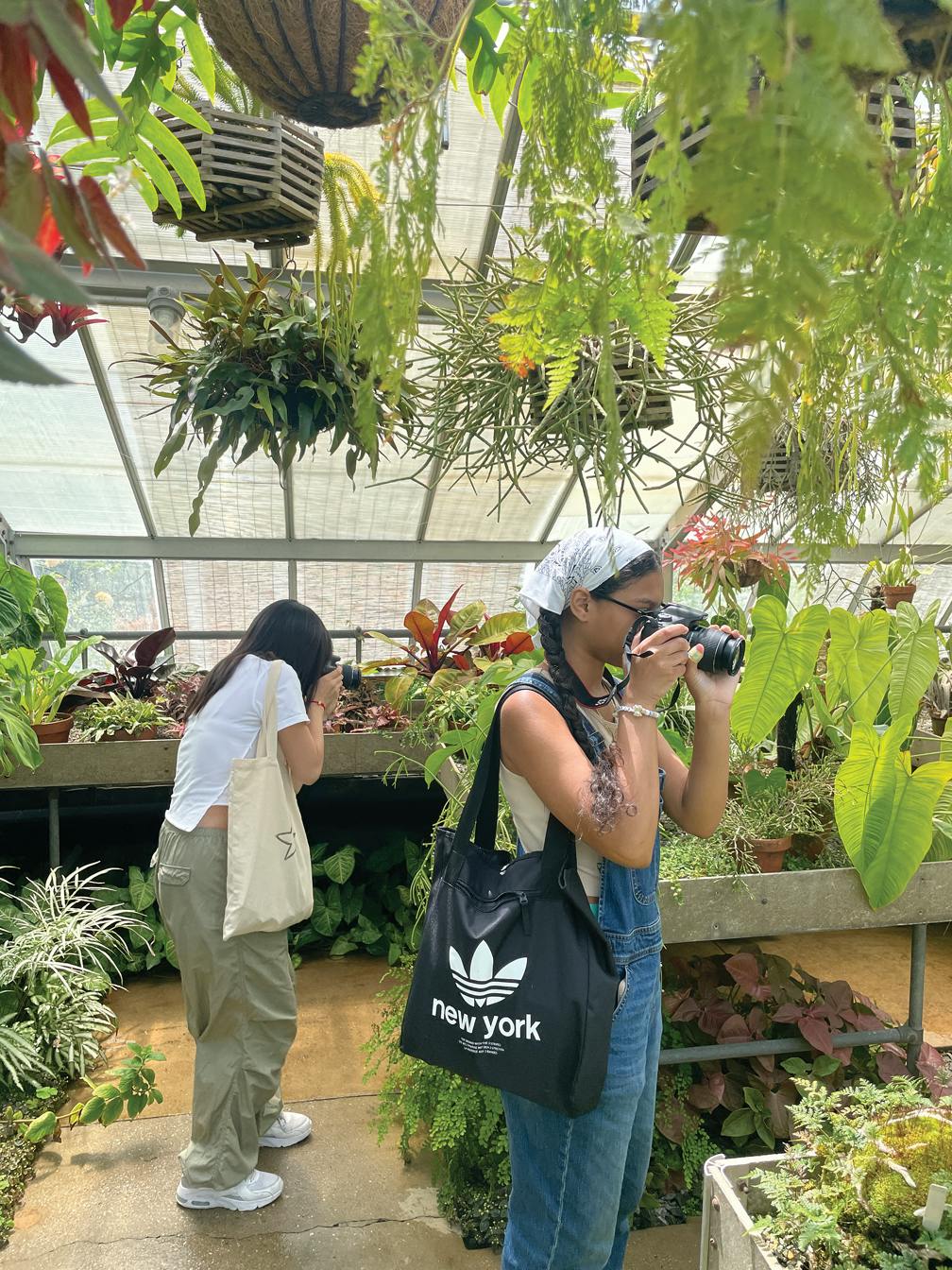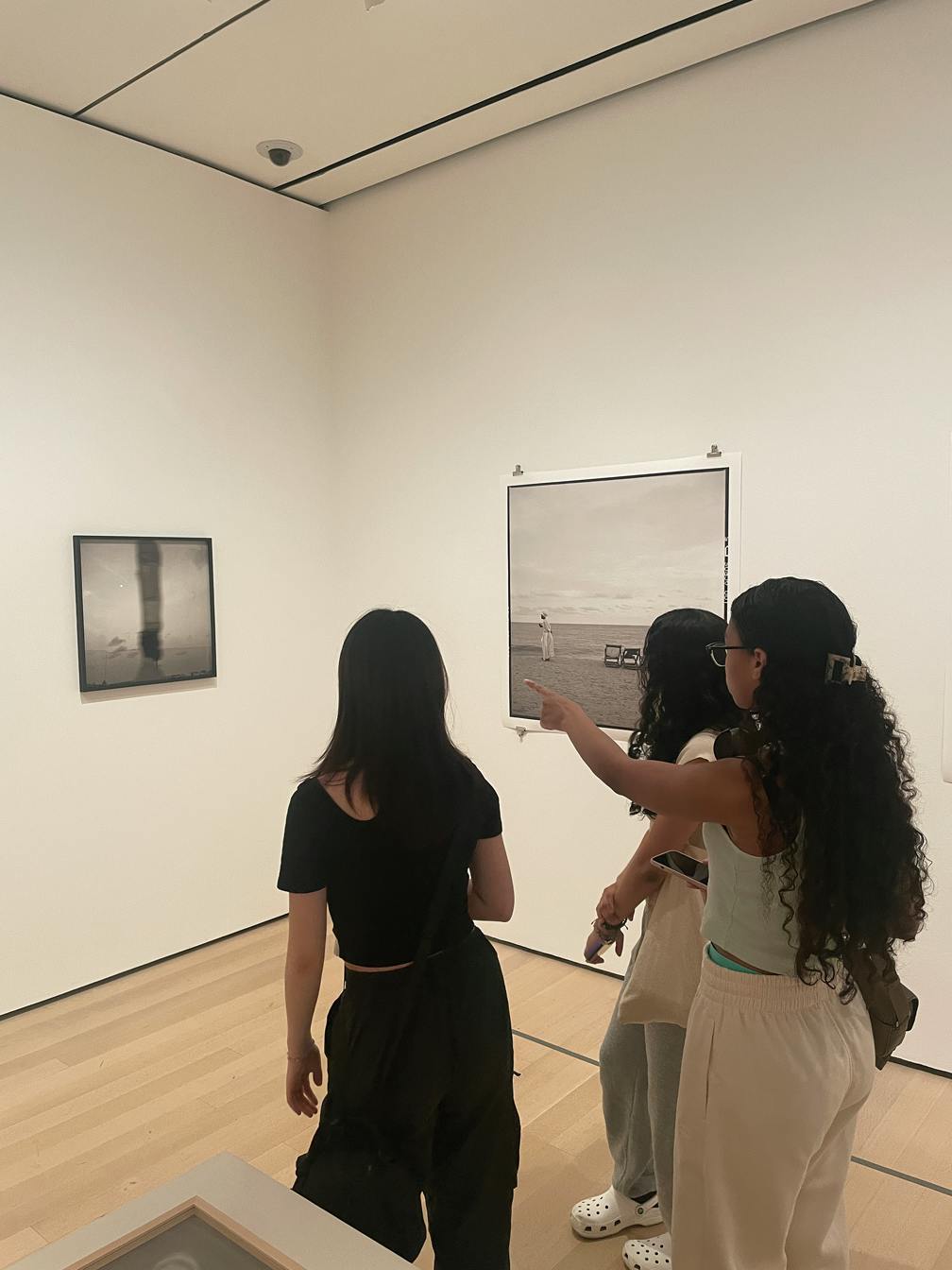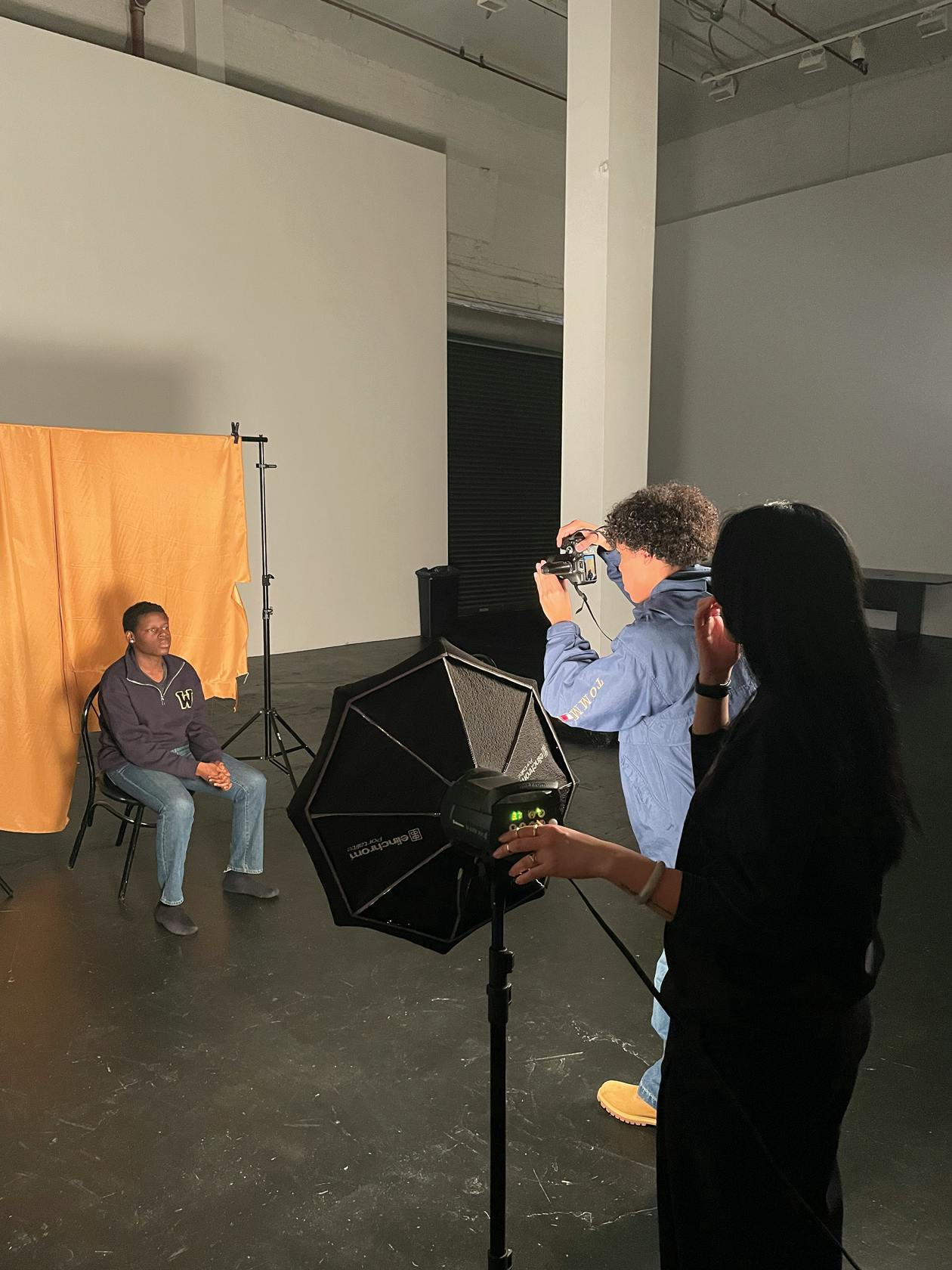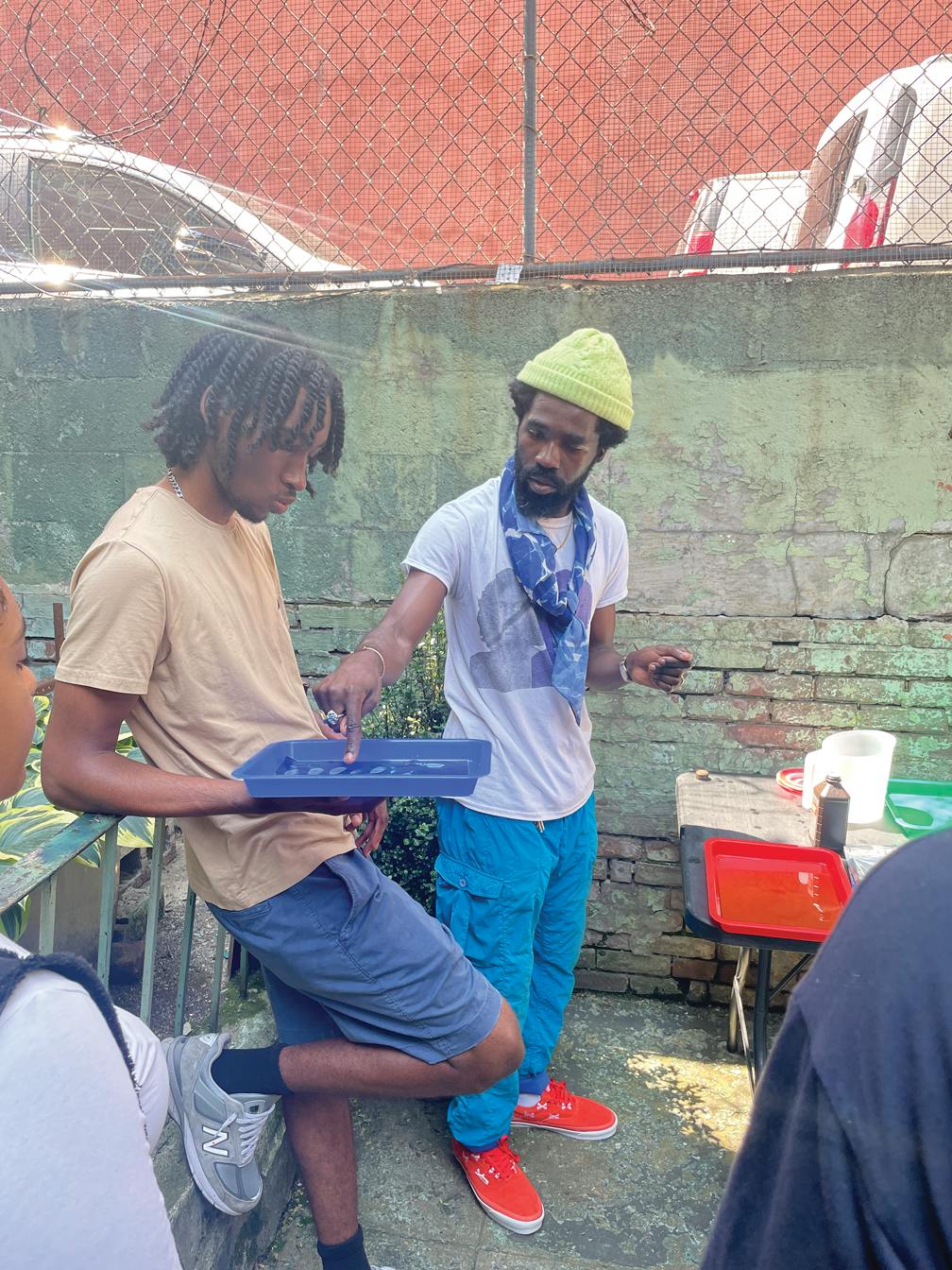Expanding the Walls: An Interview with Ally Caple
The Studio Museum offers programs for all ages, including Expanding the Walls: Making Connections Between Photography, History, and Community. This program specializes in teaching teens about photographers of color and gives youth a chance to explore their artistic abilities through photography. Expanding the Walls encourages artistic expression among young people as a way to say things from the heart without words.
In August 2023, I met with Expanding the Walls Coordinator Ally Caple to discuss the 2023 Expanding the Walls cohort. In this interview, Caple explains that Expanding the Walls allows students to look at art as a field of study rather than an extracurricular activity. She also describes how her first year has been a learning experience for both the teens and herself.
LAKE RUCKER: Describe what Expanding the Walls is in your words.
ALLY CAPLE: Expanding the Walls is an eight-month-long teen program that the Studio Museum has offered for the past twenty-plus years. Teens are invited to apply, and then they interview for the program, and once they get in they’re offered a camera, a stipend, and some other amazing perks. Ultimately the whole program is to teach them photo education and the technical side of photography, as well as introduce them to artists of African descent, such as artists in the Studio Museum collection and contemporary artists working and living in New York. For many of them, if not all of them, this program can be their entry point into the art world.
LR: How have you modified your teaching styles for this cohort?
AC: Going into it, I had a specific set of things I wanted to teach in terms of curriculum. The first thing I learned is that I had to become quick on my feet when it came to engaging with the teens. I was trying to figure out why some of the things we were talking about weren’t clicking, or why there was this general tiredness. It dawned on me at some point that this was the first extracurricular activity they’d done since before the pandemic.
That gave me a much fuller understanding and changed the way I came into our sessions. How should I engage them so that they’re ready to grow that social capacity again, and exercise that social muscle? So, it’s a photo program, but it also became a space where we could learn how to socialize again.
LR: That’s beautiful. With those challenges and everything, how would you describe the overall group of 2023 teens?
AC: They’re brilliant, and they’re quiet. Every time they speak, it’s always something incredibly mindful or thoughtful. Along with the quietness, they’re really good listeners, and they make a lot of space for listening. There’s a lot of respect in this group.
We started the first session off by talking about care, consent, and intention within photography. I wasn’t sure how that was going to land with them, if that was something they ever thought about before this. We talked a lot about Instagram and iPhone pictures, how everyone is always snapping photographs all the time with their phones, and how things get uploaded to the internet. Do we ever really think about where these things end up or where they could end up?
It landed quickly. They all very much understood, which meant that moving into our photo assignments that required photographing other people, or other spaces, that are more sensitive, the teens were mindful of this idea of intention, and asking permission, being espectful of spaces and the people they photograph.
LR: What’s your favorite part about this group?
AC: I have two. They’re really funny. That in conjunction with how patient they are, especially with this being my first year, and with Studio Museum being in a transitional time, there’s a lot of patience that comes from this group. If things come up, their response is essentially: “We’re just going to flow.”


I use collage a lot in my practice as an artist so I’ve put that into my curriculum, both as a form of art making and a way to brainstorm in the earlier stages of making an artwork.
LR: Funny, patient people! What has this cohort taught you about yourself and your art education career?
AC: They’ve taught me it’s okay that things can evolve. Having a curriculum is important. However, I think one of the greatest freedoms of Expanding the Walls being housed under Studio Museum is that there’s also room for us to be flexible, and for us to cater our lessons and our engagements to the interests of the teens.
So, through the teens and also through this program, I’ve learned I can move more fluidly through this process.
LR: And patience and learning can go both ways.
AC: Exactly. One of my biggest things as an educator, specifically within Expanding the Walls, is that I’m teaching them skills, but they’re also teaching me things. This isn’t just a one-way situation. This isn’t a thing where they come into the room, I give them a bunch of lessons and assignments, and we go home. This is more of an experience where I’m giving them lessons and assignments, and then they come back to me with additional things they learned and teach me in this process as well. It’s more of a shared space of learning.


Participants photographing at Wave Hill Gardens, 2023. Photo: Ally Caple


Participants visiting New Photography 2023 at MoMA, 2023. Photo: Ally Caple
LR: What is a typical day like in the program?
AC: I don’t think any one day has ever been the same as another. Sometimes we go over technical things within photography; sometimes we look at art; sometimes we talk about the things we want to photograph, and we look at photographs that we’ve made, or we’ll have a critique-style day.
Sometimes we’re out in the world, we’re visiting other museums, we’re visiting galleries, or we’re having engagements with people who are doing exhibition walkthroughs with us, whether that’s other museum or gallery staff, or other artists showing us exhibitions they’re involved in. We’ve taken tons of trips. We’ve visited almost every art museum in the city. We’ve gone to a lot of galleries, in Chelsea, Lower East Side, and uptown.
Some days we need to have art-making days where they get a prompt, and we spend a couple of hours listening to music, eating snacks, and making art in a therapeutic type of way. We’ve also done a lot of exciting workshops with visiting artists.
LR: What art activities have you found that this cohort is most interested in?
AC: This group has been interested in collage! I use collage a lot in my practice as an artist so I’ve put that into my curriculum, both as a form of art making and a way to brainstorm in the earlier stages of making an artwork. We had a collage workshop with the artist Ashley Teamer. She came in and talked to the teens about different ways of collaging using found materials and archival images, and we made these wonderful collages. We’ve used magazines and found imagery to look for examples of photography principles, or types of photography that we've talked about in session.
LR: What type of cameras do the students use?
AC: Canon Rebels. They get them at the beginning of the session and upon completion of the program, they get to keep the camera.
LR: Any other materials?
AC: Our Expanding the Walls room has it all. We’ve got construction paper, we’ve got paint, and markers, and gel pens, and a pile of magazines for collages. We also have beads and string for making craft-adjacent things. We’ve got a plethora of materials.
We spend a lot of time talking about artists who don’t necessarily identify as photographers, but who also use photography in their practices. We met with painter Jacob Mason-Macklin, who was a Studio Museum artist in residence from 2021 to 2022, and we got to visit him at his cohort’s exhibition at MoMA PS1 in February 2023 It’s time for me to go: Studio Museum Artists in Residence 2021–22. Jake talked to the teens about how he uses photography in his practice as a painter. Having materials to work with to let the teens practice in their own right, especially as they find inspiration through the artists we work with, has been crucial.


Participants during a studio lighting workshop with visiting artist Gia Sergovich, 2023. Photo: Ally Caple


Participants during a cyanotype workshop with visiting artist Ivan Forde, 2023. Photo: Ally Caple
Having programs that teach them other ways and forms of learning through the arts opens up a new way of understanding things like effort, potential, and hard work. Expanding the Walls offers a space for teens to learn and create more freely, on top of deepening their sense of community.
LR: Could you describe what the students are working toward?
AC: As a group, we’re working toward their exhibition. Some could argue that we start working on it at the very beginning because, once the teens come in, we start having photo assignments, and then they start making pictures. Most of them have made anywhere between two hundred fifty to three hundred digital images based on the assignments I provide. In the spring we start meeting with our Curatorial Department, and we start parsing through all these images. Curatorial helps them size down and create a smaller collection of their top photographs that eventually become their two images in the exhibition. We’re also working with the Communications Department on the exhibition website. We’re working with Collections and Exhibitions around visiting the Museum’s archive and putting together the in-person show in the gallery space.
It’s one big collaboration among the teens and myself, the curatorial fellows, Amber Edmond and Sheldon Gooch, who co-organized this year's exhibition, Between matter and memory. So, the teens can understand more about what types of jobs there are within our museum. Then to push it even further for the teens who are interested in pursuing art or photography in the future, they start thinking about portfolios for college.
LR: What would you tell teens that want to do the program?
AC: Photography is a great way to either expand your interest in the arts or begin your interest in the arts. In this cohort, a lot of them came in with other interests. A lot of them liked to sketch and draw or illustrate. We have some folks who loved film and movies, so they’re interested in that world of photography, or image-making. We had some teens who were interested in video game design.
For a lot of them, learning photography and learning about the photo world has given them more context on where they want to situate themselves within the arts. On the flip side of that, we had some teens who were interested in art but didn’t know much about it, or that it was something that they could do. Starting with photography in a program that introduces them to using photography in different ways has opened opportunities for them to grow and expand within the arts.
LR: Why do you feel it’s important for youth to have programs like Expanding the Walls?
AC: If they are lucky enough to get art programs in school, programs like Expanding the Walls allow them creative freedom without the confines or limitations of getting a specific letter grade. Oftentimes in academic settings, we are used to and taught that everything we do is either good or bad and we get graded on it. Within Expanding the Walls there’s a lot more freedom that comes with being able to make art and talk about it. It’s your thing that you made, and the way that you justify and defend it, talk about your feelings, and share your thoughts and your process are what makes it yours.
Having programs that teach them other ways and forms of learning through the arts opens up a new way of understanding things like effort, potential, and hard work. Expanding the Walls offers a space for teens to learn and create more freely, on top of deepening their sense of community, which can strengthen and/or jumpstart choices they make as they continue to move through the world beyond their time at Studio Museum.
The Expanding the Walls 2023 exhibition, Between matter and memory, is online through July 2024 at www.expandingthewalls.studiomuseum.org